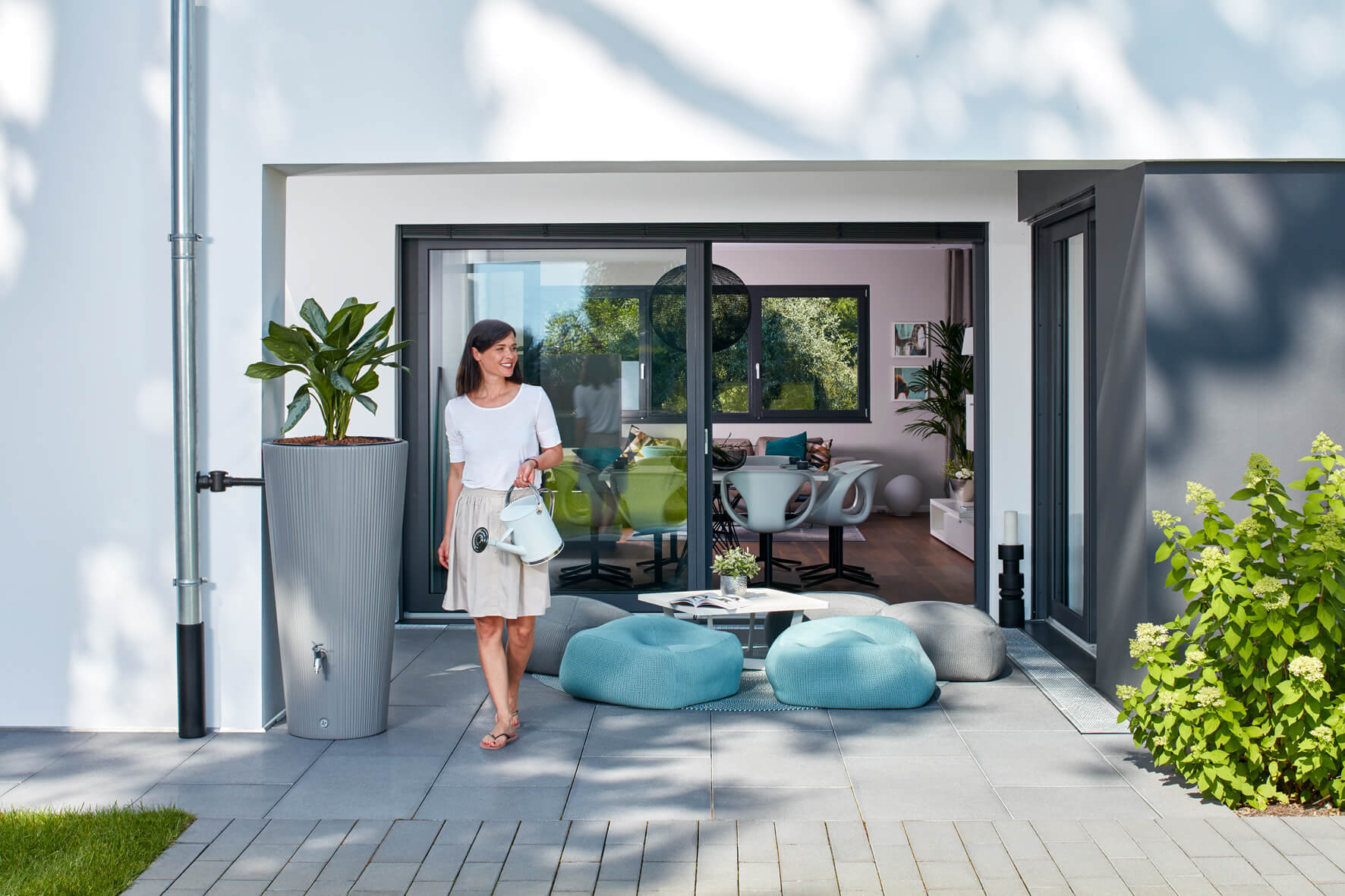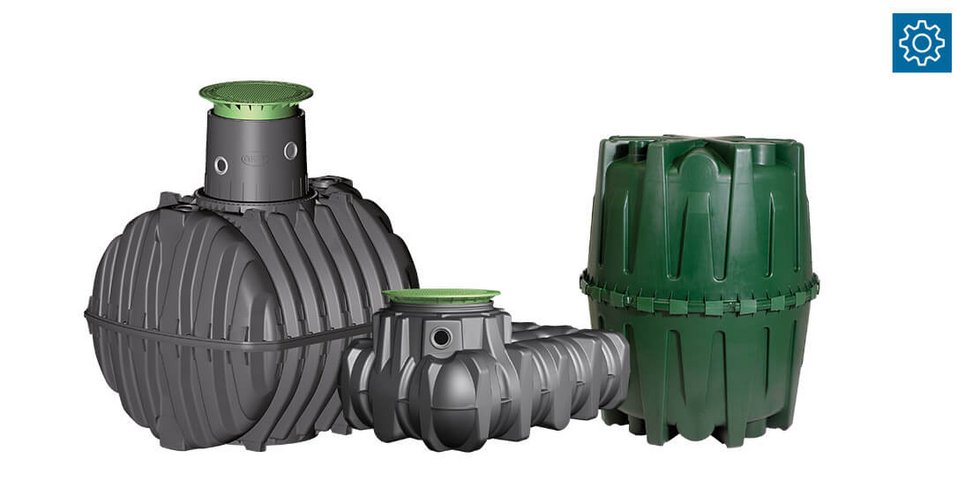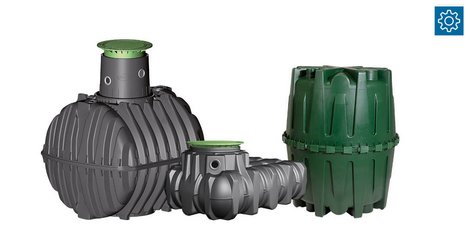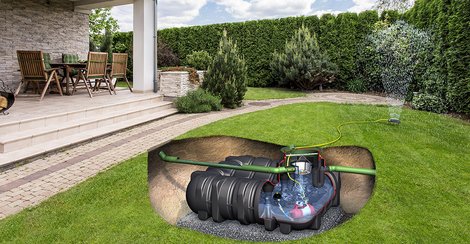Why collecting rain always makes sense
Rainwater is not just for gardens, it also helps your wallet. Read our interview with expert Dr. Walter Kolb to find out why and how best to go about it.
Dr. Walter Kolb is a pioneer and champion of rainwater harvesting and has dedicated an entire book to the subject in his book "Saving water in the garden". In order to utilise rainwater in his own garden, the landscape architect, later author, and department head of a state institute, confronted the authorities at the time and promptly constructed his own cistern. In this interview, he explains why rainwater harvesting is a matter of honor for him, how it works and what you need to bear in mind.
Dr. Kolb, let's assume I have a house with a garden - how important is irrigation for me?
First of all, you should check what types of vegetation are in the garden. If there are areas for vegetables or summer flowers, for example, it can be assumed that watering is also necessary. The soil conditions must also be taken into account. Poor sandy soils only hold water for a short time and therefore require more watering. As a homeowner, you should be aware of all this.
In other words, if I'm lucky, the rain will take care of my plants on its own anyway and everything will be fine?
In rainy areas, you may be able to do without watering in some years. But even there, a break in the rain in summer with high temperatures cannot be ruled out - and the heatwaves are getting worse and worse. Plants don't benefit from heavy rainfall in autumn and winter if there is a lack of water during the growing season.
If I collect the rainwater, who benefits more in the long term: the environment or my wallet?
In the long term, you are always doing something good for your wallet too, and the benefits are already there today. The charges imposed by water suppliers will increase because the costs of securing usable groundwater reserves are considerable and are passed on by the suppliers to the consumers. The benefit for the environment is the preservation of groundwater reserves and the cooling function in heated urban structures. And that is becoming increasingly important. But there are other good reasons too: If rainwater is quickly drained away unused, this puts a strain on the sewers and sewage treatment plants. This often leads to flooding, especially during heavy rainfall - which is also becoming increasingly common. Cisterns and infiltration systems offer a remedy.
Apart from the garden: Where else can rainwater be used?
It is not only suitable for watering green spaces, but also as service water for flushing toilets, for use in washing machines and for filling garden ponds and swimming ponds - thus saving precious drinking water. So rainwater is not just for watering the garden.
How much money do I need to invest?
That depends on the local conditions and the size of the system. Simple rain barrels are already available at very reasonable prices. For a decorative rainwater tank with a capacity of 300 liters, you're already looking at around 100 to 250 euros. A tank with 5000 liters is available for 2000 euros. Then there is the technology around it, for example as a complete garden package for less than 3000 euros plus installation.
Garbage cans, tanks, cisterns: what are the advantages of each?
The rain barrel is small and comparatively cheap, but offers very little volume. It is ideal if only small roofs are connected and little water is required. Tanks and cisterns can be adapted in size to suit consumption. They are usually underground and therefore very space-saving.
What criteria do I use to decide on a particular system and an appropriate size?
The decisive factors are the available roof catchment area, the expected annual rainfall and the expected amount of service water required.
How do I find out how much I need?
Calculations have shown that a good 30 to 60 liters of water per square meter are required per growing season for intensive crops, such as vegetables like cucumbers or pumpkins, which need a lot of moisture outdoors, and 10 to 25 liters of water for lawns and perennials. Of course, this also depends on natural rainfall. If surfaces are mulched or hoed, the values can be reduced.
I remember from grandma's old rain barrel in the garden: mosquitoes and other creatures always breed on it. And in midsummer, the water stagnates. What is your simple, practical tip?
With rain barrels as closed containers, none of that is a problem.
You yourself have experience with your own system, which even supplies the water for flushing the toilet. How does this work and what do you have to bear in mind with such a connection in your own home?
You need two separate water circuits in the house. One for the service water and one for the drinking water. A pump with an automatic switch is required to pump the service water. This is exactly how it has worked in my house for 30 years - without any problems.

You yourself have experience with your own system, which even supplies the water for flushing the toilet. How does this work and what do you have to bear in mind with such a connection in your own home?
You yourself have experience with your own system, which even supplies the water for flushing the toilet. How does this work and what do you have to bear in mind with such a connection in your own home?
What was the deciding factor for you personally to switch to this system back then - and also to get into trouble with the city council, as one hears?
I had a large garden that required considerable amounts of water from the tap. I was annoyed that I had to pay sewage charges for this. So I built the cistern. According to the local bylaws, I wouldn't have been allowed to do that back then. Today, the municipality even subsidizes the construction of such systems. A positive turn of events for me.
We've now talked a lot about collecting rainwater and then using it, but what else can I do for effective rainwater management in my garden? Because as you said, it's also about the water table ...
Yes, exactly. Infiltration of rainwater can promote groundwater recharge. And this is how it works: infiltration troughs release the rainwater directly into the ground via the surface. Infiltration elements then first collect the water and then allow it to seep slowly into the subsoil. It is therefore always a good way of counteracting the problem of falling groundwater levels.

The most important facts at a glance
The interview with Dr. Walter Kolb makes it clear that using valuable rainwater is always worthwhile. The following points should be observed and serve as a checklist for rainwater enthusiasts.
Forms of vegetation
First of all, you should check the plants and the soil conditions. They help determine how much water is needed.
Calculate according to area
Open field with vegetables = 30 to 60 liters per square meter, lawn and perennials = 10 to 25 liters per square meter.
What else do you use it for?
For the washing machine and flushing the toilet, for example. This requires a second water circuit with a pump in the house.
View of the roof
Classic rain barrel or a cistern under the floor? The size of the connected roof area is a deciding factor.
Good seepage!
If you also want to take action to promote groundwater recharge, create infiltration troughs.





